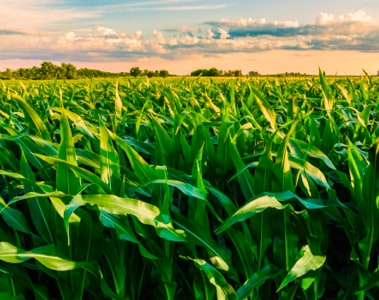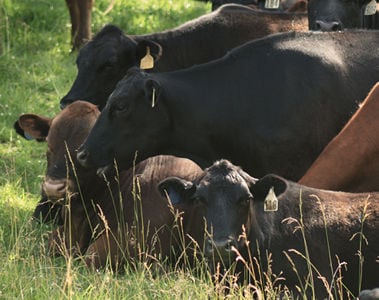
-
North America/EN
- Global
- North America
- Latin America
The 2024 growing season has offered variable temperature and precipitation patterns across North America. The majority of the Corn Belt is experiencing the least concerning drought conditions they’ve dealt with for several years (except for parts of Ohio which are suffering one of the driest periods on record) with some parts of the region having above normal rainfall. Weather conditions throughout the plant’s lifecycle and into harvest influence crop yield and plant health. A variety of plant diseases can occur which may diminish yields and some fungal pathogens can produce mycotoxins which affect crop quality leading to potential discounts or even rejection at the mill or elevator. This article will provide an overview of factors which influence the presence of mycotoxins in crops in order to set the stage for the next issue of The Digest which will provide predictions of potential mycotoxin contamination patterns in the 2024 corn crop.
Weather-related factors including temperature and humidity play a role in the development of fungal diseases and also influence mycotoxin synthesis by certain molds. Regional differences in mycotoxin occurrence and contamination patterns are typically observed because different climates support different types of molds as molds have variable temperature and moisture requirements to grow. Additionally, anything that stresses the plant, including weather extremes ranging from drought to excessive rainfall as well as hail and wind damage, insect damage, weed pressure, and an assortment of other stresses, increase the likelihood that a plant will suffer from a fungal infection and potential mycotoxin accumulation.
Most mycotoxin-producing molds live in the soil and can survive on crop residues. Corn plants are especially at risk to the fungal pathogens which cause ear rots around silking but can be infected at any point during the growing season. Mold spores can be transferred to silks via wind, splashing water, or by insects. Soilborne spores can also infect plants via uptake by the roots. Damage to the plant enhances the ability of molds to colonize the plant.
Although the fungi which cause foliar diseases like Tar Spot, Gray Leaf Spot, Northern Corn Leaf Blight, Common Rust, and Anthracnose have not been associated with production of mycotoxins, such leaf diseases stress the plant, can reduce yields, and increase the risk for secondary disease by molds that can produce mycotoxins. Additionally, several of the troublesome mycotoxigenic fungi can also cause stalk rot and root rot and as such, mycotoxins may be present in various parts of the corn plant beyond the ear. Stalk and root rots can also lead to other issues such as premature death and lodging. Scouting fields during the growing season can help identify disease pressure and guide timely and appropriate management tactics that can boost plant health and may reduce the risk for mycotoxin accumulation.
Table 1. Situations which can occur from planting through harvest and the associated risk for mycotoxins.
Situation | Associated Risks | Potential Mycotoxins |
Late planting | Increased chance of heat stress during silking | Aflatoxins, Fumonisins |
Potential greater insect pressure during silking | All | |
Late harvest – crop potentially exposed to inclement weather conditions later into fall | Trichothecenes, Zearalenone | |
Higher than ideal moisture content at harvest | Aflatoxins, Ochratoxins; Additional storage-associated toxins | |
Planting completed within short window | Short window for optimal harvest conditions, crop may stand in field beyond maturity and allow for additional accumulation of mycotoxins | All |
Foliar diseases | Impaired plant health increases risk of secondary infection with mycotoxin-producing molds | All |
Insect, wildlife, hail, wind, etc. damage | Damage to plant enhances potential fungal colonization / Plant stress increases susceptibility to disease | All |
Hot, dry weather including drought | Plant stress increases susceptibility to disease | Aflatoxins, Fumonisins |
Excess moisture, moderate temperatures | Plant stress increases susceptibility to disease | Trichothecenes, Zearalenone |
High fuel costs | Inadequate drying of grain can lead to poor storage conditions (i.e., higher moisture content) which increases risk for mold survival and mycotoxin accumulation after harvest | Aflatoxins, Ochratoxins, Additional storage-associated toxins |
It’s important to remember that visual inspection alone is not a reliable indicator of mycotoxins, so screening your grain is an important step in understanding the level and type of mycotoxins present in your feed. Rapid test kits are available that can be used on-site to quickly identify the presence of mycotoxins in grains and some coproducts like distiller grains while submitting samples for analysis to a mycotoxin service lab is another option to determine mycotoxin presence and is needed for more complex feedstuffs like corn silage. If you would like to learn more about the mycotoxin services dsm-firmenich offers and potentially contribute samples to our annual mycotoxin survey in order to assess risk in your operation, please contact your dsm-firmenich representative. The October issue of The Digest will provide a more detailed analysis of growing conditions and the potential mycotoxin implications for 2024 harvest, so be sure to check the next issue for more mycotoxin insights!
16 September 2024



15 Jul 2024
We detected that you are visitng this page from United States. Therefore we are redirecting you to the localized version.